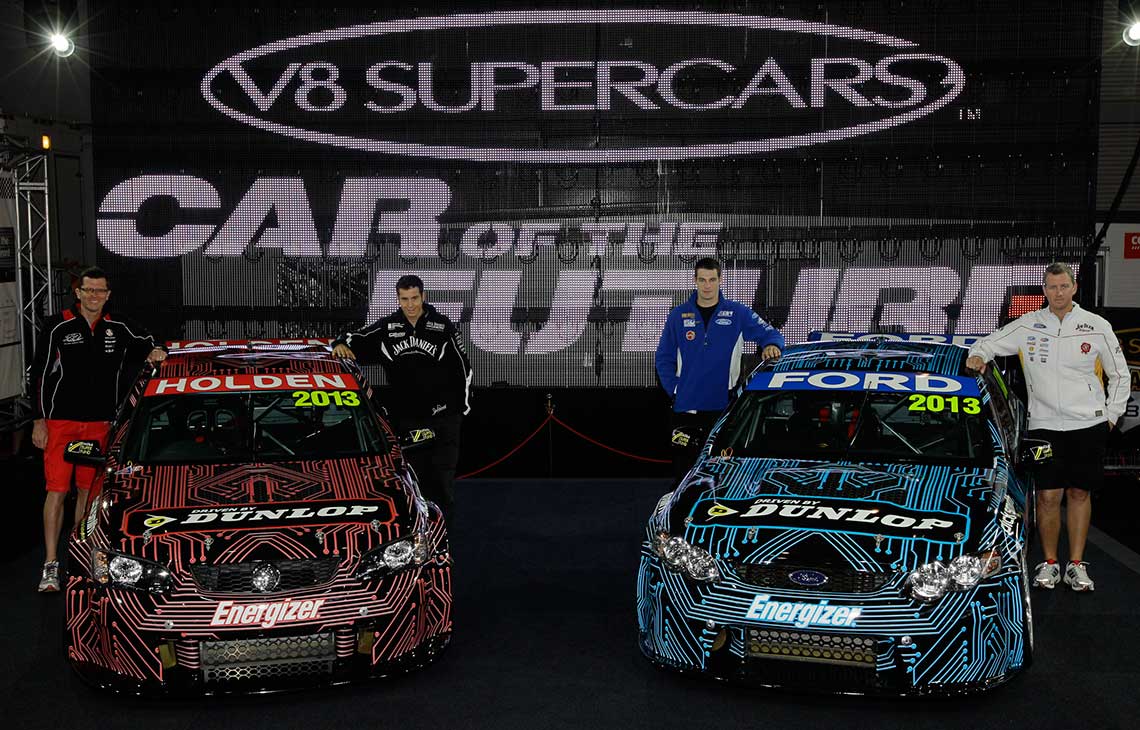The Car of the Future is now the V8 Supercar of the present…
A three year project in the making, the ‘Car of the Future’, now officially referred to as the New Generation V8 Supercar), was set in motion in 2008 when a working group (spearheaded by former Chairman of the V8 Supercar Commission and five-time series champion, Mark Skaife) was organised to investigate future directions for the sport.
Seeking to broaden the appeal and assure the long-term viability of the Championship, the primary objectives of the Car of the Future were to:
- introduce new cars
- improve driver safety
- reduce running costs
- create a more level playing field
- encourage more manufacturers to take the battle to Holden and Ford
— And it’s worked…
The “Car of the Future” regulations have revolutionised the sport
The 2013 season saw the arrival of two new brands, the factory-backed Nissan after its 20-year exile from the series and the privately-backed Erebus AMG Mercedes, representing the biggest shake-up of the V8 Supercars era.
2014 also saw a fifth marque represented on the starting grid with Volvo entering a factory team in collaboration with Garry Rogers Motorsport and Volvo’s performance arm, Polestar.
Designed from the ground up, the Car of the Future project has essentially created a common platform from which manufacturers can build a V8 Supercar.
The cars are skinned so they still essentially look like the production model you can buy off the showroom floor, with a few adjustments to develop the aerodynamic form and to ensure that all of the cars have the same external dimensions and meet minimum weight limits…
But, it’s under the skin where the major changes have taken place
Aside from some technologies still at each team’s digression, all the cars on the grid are built to the same technical specifications and use standardised components. They all share a ‘control’ chassis (a generic floor plan and roll cage arrangement), a rear-mounted six-speed transaxle which combines the differential and gearbox in the one unit, and front and rear control suspension with the rear changing from live axle to independent.
Manufacturers were given a few options for what engine to use – either a ‘category’ engine if preferring to use already-established technology; or, using its own V8 engine, with parity systems applied to ensure even performance levels with the existing cars.
Although the aero packages do differ marginally between each model, the four models have the closest aerodynamic parity of any makes in the history of the sport – all four are within half a per cent of each other in terms of relative aerodynamic efficiency. The cars were subject to rigorous testing using the latest technology to measure the comparative downforce and drag of each model. The vehicle bodies and aero kits are within 2kgs of overall downforce and 2kgs of drag of each other.
Most importantly, the essence of V8 Supercar racing has not changed
The new generation V8 Supercars still feature V8 engines, rear-wheel drive and four doors; they are just as fast, if not actually faster; they still continue to make that unique growl and the best drivers from Australasia and conceivably others from around the globe, will still be fighting it out for the title.

